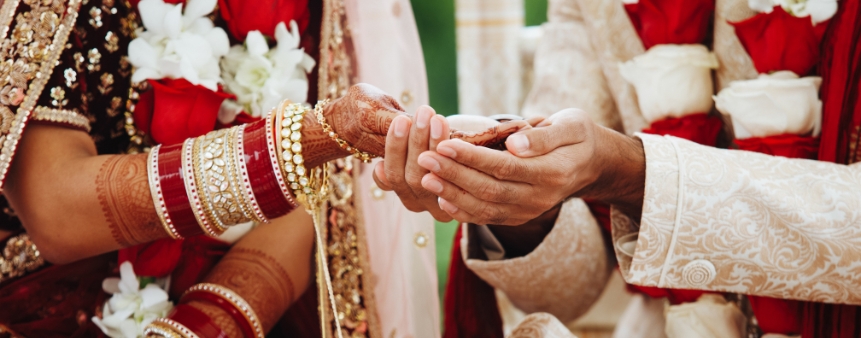Talk to India's best Astrologers
First Consultation at ₹1 only
Login
Enter your mobile number
Indian Weddings are known for their different culture and rituals, every culture gives us a different vibe. One of the most popular Indian Weddings is Sindhi weddings. They are a vibrant celebration of culture, traditions, and love. These weddings are held in the Indian state of Sindh but are also celebrated by the Sindhi community living worldwide. They are characterised by colourful ceremonies, vibrant music, and sumptuous feasts that reflect the rich heritage of the Sindhi people. They believe in living and celebrating life king-size. Sindhi Wedding is known for adding colours with every ritual and a flavour of famous dishes in that culture makes the wedding more exotic.
The primary wedding day starts with the Baraat ceremony, where the groom and his family arrive at the bride's home. The bride's family welcomes them with sweets and flowers, and the groom is seated on a unique platform where the wedding rituals occur. Jaimala is when the couple share garlands made of sacred flowers.
The wedding ceremony is a mix of Hindu and Sindhi rituals and involves tying a sacred thread around the couple's necks, symbolising their union. This is followed by the seven vows taken by the bride and groom and serves as a declaration of their love and commitment to each other. The couple then takes seven rounds around a sacred fire, symbolising their journey together. Finally, in Paon dhulai, the bride and groom sit together, and they put milk on the shrine to take blessings. Palli-Pallo, in this Sindhi Wedding, the bride and groom are tied together with red cloth.
After the wedding ceremony, the newlyweds are showered with flower petals. The couple and their families sit down to a grand feast, typically a vegetarian spread that includes rice, lentils, vegetables, and sweets. The couple visits the bride's house post-wedding. The Sindhi community strongly emphasises family and tradition, and these values are reflected in their wedding celebrations.The wedding does not only focus on the holy matrimony of the bride and groom, but also highlights the start of a new relationship between two families.
In Sindhi post wedding rituals, the bride’s feet are washed by the groom’s family and she is asked to put milk in the corners of the home. This ceremony is known as Datar. Gadjani, in this Sindhi marriage ceremony, the bride is introduced to the groom's family with famous Sindhi food. On the first day of the Sindhi marriage, the bride is asked to make a sweet dish for the family and is appreciated with some token of money as love.
Sindhi weddings are a celebration of culture, traditions, and love. They bring together families, friends, and communities to celebrate the union of two people and honour the Sindhi people's rich heritage. Whether you are a member of the Sindhi community or simply a lover of vibrant cultural celebrations, a Sindhi wedding is an experience that you will never forget. Sindhi marriage is one of the most exciting marriages with Sindhi wedding rituals, and the blessings given to the couple help them to live a happy life.

The Sindhi surnames are Dahri.